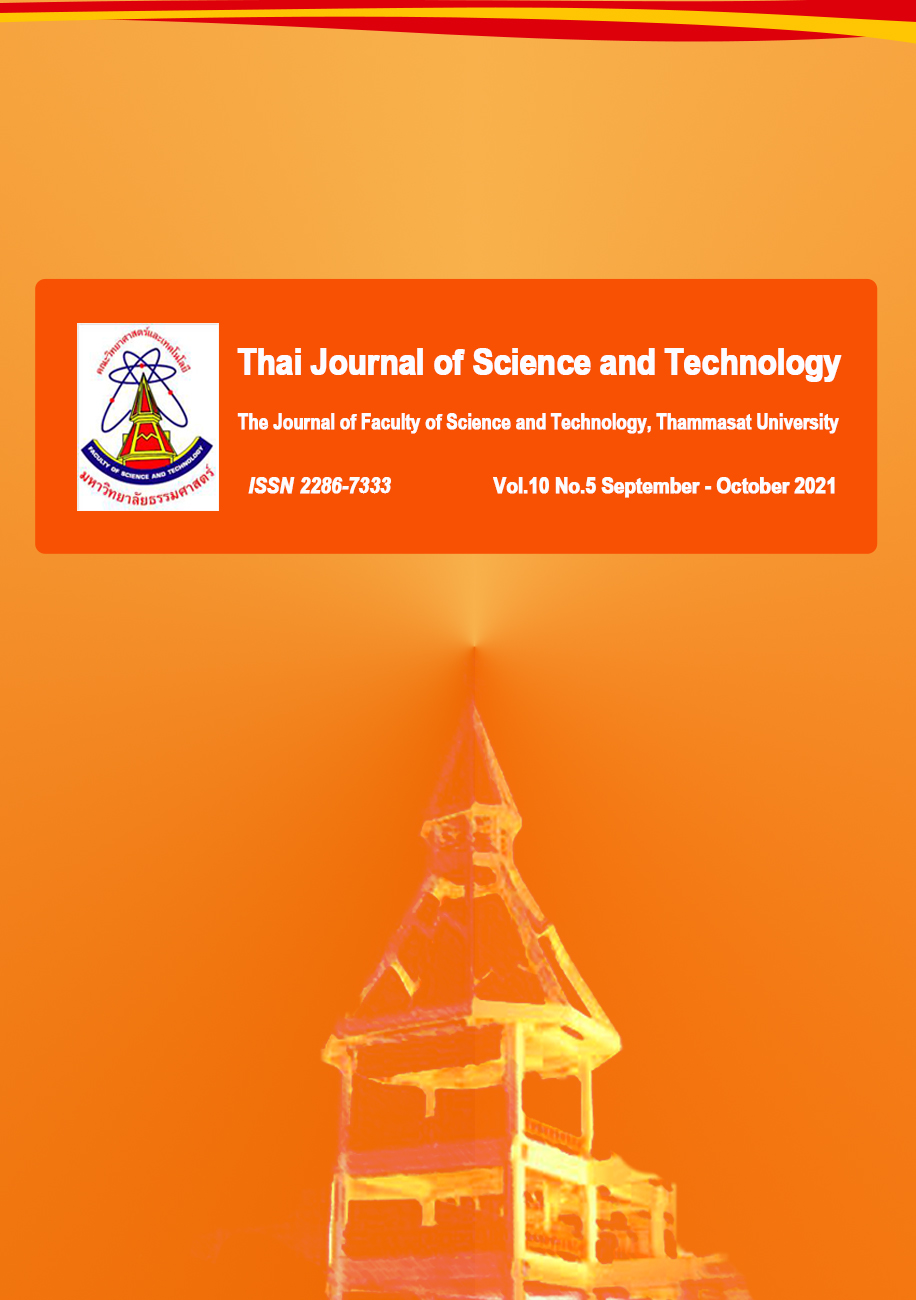Track Management Approaches for Underground Tunnel Construction
Main Article Content
Abstract
The evacuation of muck and transportation of material and equipment within underground tunnels under construction are usually performed using so-called supply trains. Managing the movement of several incoming and outgoing trains on a rail track, designated in this paper as “track management”, is therefore essential to the success of tunnel construction. This research studied two different approaches to track management by using a sizeable drainage-tunnel construction in Bangkok as a case. Petri Net-based models were developed, and COSMOS simulations were performed to gain insight into the two different approaches to track management. The results indicated that the first approach, a rather general one, is easy to manage. However, this approach is prone to an operation-deadlock problem if there is a lack of balance between the number of trains and the number of double-track points along the rail track. The second approach was found to be more complicated to operate but had no deadlock issue. The second approach, therefore, provides flexibility in managing the track, as it allows more combinations of the number of supply trains and the number of double-track points.
Article Details

This work is licensed under a Creative Commons Attribution-NonCommercial-NoDerivatives 4.0 International License.
บทความที่ได้รับการตีพิมพ์เป็นลิขสิทธิ์ของคณะวิทยาศาสตร์และเทคโนโลยี มหาวิทยาลัยธรรมศาสตร์ ข้อความที่ปรากฏในแต่ละเรื่องของวารสารเล่มนี้เป็นเพียงความเห็นส่วนตัวของผู้เขียน ไม่มีความเกี่ยวข้องกับคณะวิทยาศาสตร์และเทคโนโลยี หรือคณาจารย์ท่านอื่นในมหาวิทยาลัยธรรมศาสตร์ ผู้เขียนต้องยืนยันว่าความรับผิดชอบต่อทุกข้อความที่นำเสนอไว้ในบทความของตน หากมีข้อผิดพลาดหรือความไม่ถูกต้องใด ๆ
References
Chen, M., Hariharaputran, S., Hofestädt, R., Kormeier, B., & Spangardt, S. (2011). Petri net models for the semi-automatic construction of large scale biological networks. Natural Computing, 10, 1077–1097.
Damrianant, J. (2003). COSMOS: a discrete-event modelling methodology for construction processes. International Journal of Internet Enterprise Management, 1, 128–152.
Damrianant, J. (2018). Optimization of Supply Trains in Tunnel Boring Operation Using Tunnel Boring Machines. In 6th International Conference on Advanced Civil, Structural and Mechanical Engineering (pp. 8-12).
Lv, Y. Q., Lee, C. K. M., Wu, Z., & Chan, H. K. (2013). Priority-based distributed manufacturing process modeling via hierarchical Timed Color Petri Net. IEEE Transactions on Industrial Informatics, 9, 1836-1846.
Rinke, N., Gösseln, I. V., Kochkine, V., Schweitzer, J., Berkhahn, V., Berner, F., Kutterer, H., Neumann, I., & Schwieger, V. (2017). Simulating quality assurance and efficiency analysis between construction management and engineering geodesy. Automation in Construction, 76, 24-35.
Roux, O., Duvivier, D., Quesnel, G., & Ramat, E. (2013). Optimization of preventive maintenance through a combined maintenance-production simulation model. International Journal of Production Economics, 143, 3-12.
Singh, K., Raj, N., Sahu, S. K., Behera, R. K., Sarkar, S., & Maiti, J. (2017). Modelling safety of gantry crane operations using Petri Nets. International Journal of Injury Control and Safety Promotion, 24, 32-43.
Si, Y. W., Chan, V. I., Dumas, M., & Zhang, D. (2018). A Petri Nets based Generic Genetic Algorithm framework for resource optimization in business processes. Simulation Modelling Practice and Theory, 86, 72-101.
TERRATEC. (2016). TERRATEC tunnel boring machine - EPB series. Retrieved from: https://www.youtube.com/watch?v=1XVkmbeB958. Accessed on January 21, 2020.
Wakefield, R. R., & Sears, G. A. (1997). Petri Nets for simulation and modelling of construction systems. Journal of Construction Engineering and Management, 123, 105-112.
Zhang, D. Z., & Anosike, A. I. (2012). Modelling and simulation of dynamically integrated manufacturing systems. Journal of Intelligent Manufacturing, 23, 2367–2382.


